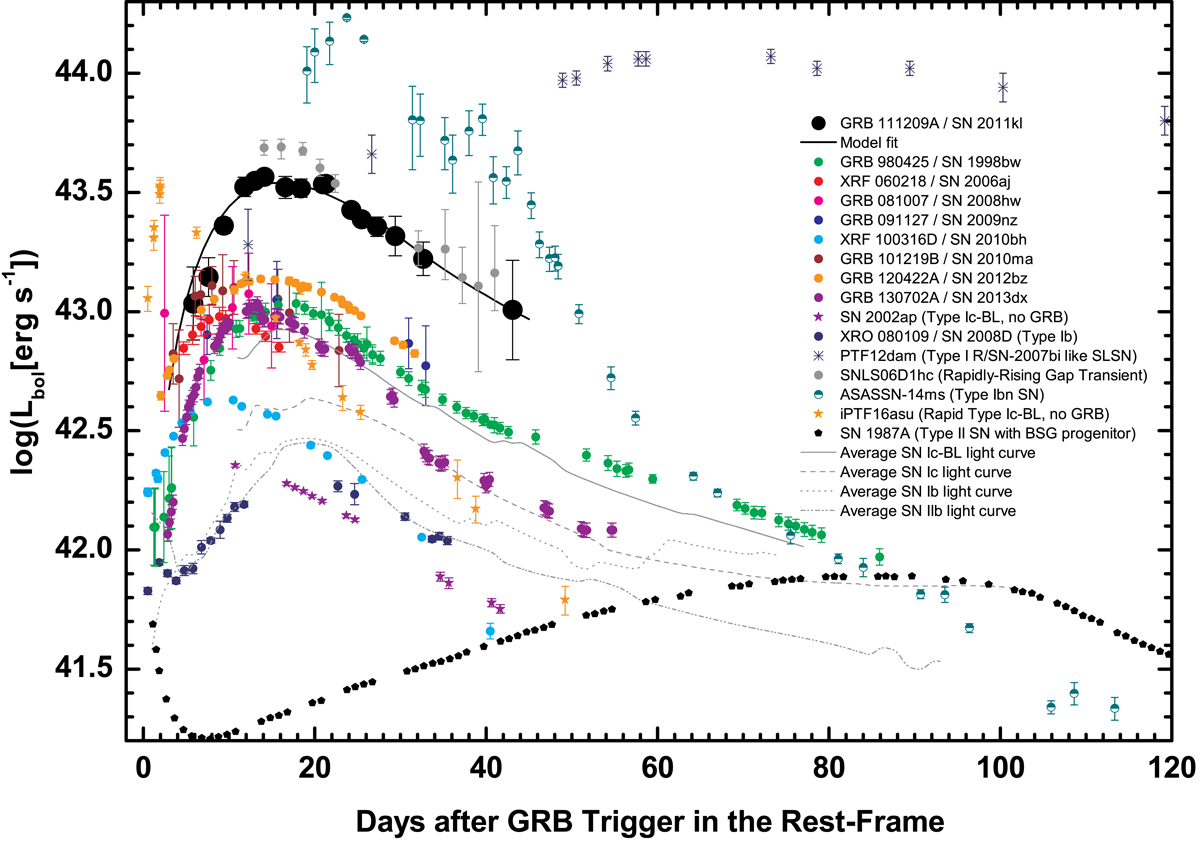Fig. 2.

Bolometric light curves of SE-SNe. SN 2011kl is seen to exceed all other well-monitored GRB-SNe (Olivares et al. 2012, 2015; Prentice et al. 2016) in luminosity, including the bright GRB 120422A/SN 2012bz (Schulze et al. 2014) and the recent well-monitored GRB 130702A/SN 2013dx (Toy et al. 2016). SN 2011kl is far less luminous than SLSNe, exemplified in this figure by PTF12dam (Chen et al. 2015), but of similar luminosity as one of the rapidly rising gap transients (RRGTs) presented by Arcavi et al. (2016); the light-curve evolution is also similar. We assign SNLS06D1hc the same peak time as SN 2011kl. Several further luminous SNe are also shown (see Sect. 4.1.4 for more details). Additionally, we plot mean light curves of four different SE-SNe types taken from Lyman et al. (2016) as well as SN 1987A, which had a BSG progenitor (Suntzeff & Bouchet 1990). We assume tpeak = 64 days for PTF12dam (Nicholl et al. 2013; Chen et al. 2015) and tpeak = 19 days for the average curves (Lyman et al. 2016).
Current usage metrics show cumulative count of Article Views (full-text article views including HTML views, PDF and ePub downloads, according to the available data) and Abstracts Views on Vision4Press platform.
Data correspond to usage on the plateform after 2015. The current usage metrics is available 48-96 hours after online publication and is updated daily on week days.
Initial download of the metrics may take a while.


